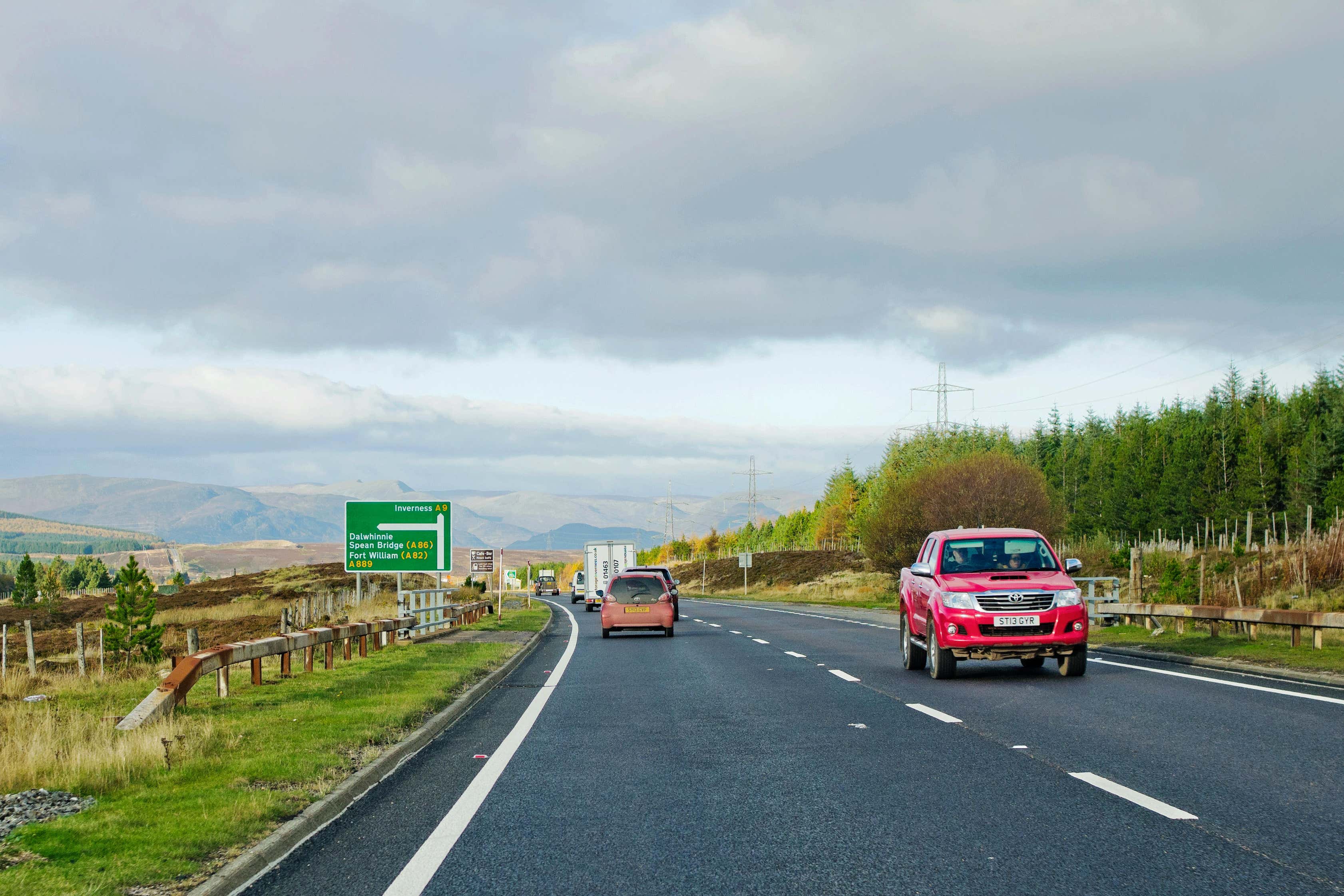Fewer than one in 10 A-road miles are dual-carriageway in dozens of areas
The AA said upgrading single carriageways can ‘improve traffic flows and air quality whilst reducing collisions’.

New analysis has revealed how rare it is for A-road stretches in Britain to be dual-carriageway.
Fewer than one in 10 A-road miles are dualled in 36 local authority areas, according to Department for Transport (DfT) figures analysed by the PA news agency.
The AA said converting single-carriageway A-roads into dual-carriageways can “improve traffic flows and air quality whilst reducing collisions”.
Most of the 36 areas are largely rural, such as Pembrokeshire, where only 0.8% of A-road miles are dualled.
Other examples include the Scottish Borders (1.5%), Cumbria (8.4%) and Wiltshire (9.1%).
But five London boroughs are in the same category, such as Islington (5.2%), Sutton (5.8%) and Lambeth (8.9%).
The proportion of A-road miles that are dual-carriageway across Britain barely changed in a decade, from 17% in 2012 to 18% in 2022.
Minor A-roads are the responsibility of local authorities, while major A-roads are managed by National Highways (in England), Traffic Wales and Traffic Scotland.
Dual-carriageways have been found to improve safety and reduce congestion compared with single-carriageway roads.
Their extra lanes and the barrier between vehicles travelling in opposite directions make it much easier and safer for slower traffic to be overtaken.
It is important to have a good network of connected and dualled A-roads
Speed limits on dual-carriageways are up to 70mph, whereas on single-carriageway roads they can be no more than 60mph.
Halton, Cheshire, is the local authority area with the highest proportion of A-road miles that have been dualled, at 70.1%.
That is followed by Plymouth, Devon (67.6%); Newport, South Wales (63.9%) and Milton Keynes, Buckinghamshire (62.4%).
AA president Edmund King said: “The dualling of key A-roads greatly enhances connectivity and indeed road safety.
“Improving unsafe, congested, single-carriageway roads and building essential bypasses can improve traffic flows and air quality whilst reducing collisions.
“It is important to have a good network of connected and dualled A-roads, which are vital for the economy and environment.
“Congestion costs businesses billions of pounds and is detrimental to air quality and CO2 emissions.”
Mr King said a “great example” of the benefits of dualling A-roads is the A11 in Norfolk.
“Some 30 years ago the A11 was a mixed bag of single-carriageway roads, many going through the middle of towns and villages, causing chaos and congestion,” he said.
“Following the A11 ‘dual it’ campaign, all of the road is now high quality dual-carriage, which not only speeds journey times but bypasses the towns and villages and enhances safety and the environment in those villages.”
Steve Gooding, director of motoring research charity the RAC Foundation, said: “For a whole array of financial and environmental reasons, it is implausible to think that we’ll see a large-scale initiative anytime soon to dual our single-carriageway A-roads.
“A more practical and cost-effective answer to improving safety on A-roads is probably to ‘engineer out’ identified problems and hazards rather than try to upgrade hundreds of miles of routes, with all that entails.”
Last month, the DfT said its decision to cancel HS2 north of Birmingham would enable it to fund the long-awaited dualling of the A1 in Northumberland between Morpeth and Ellingham.
In March, a proposed dualling of a stretch of the A64 north-east from York, North Yorkshire, was among dozens of major road projects in England postponed by the Government until the five years after 2030.
Demands to dual the whole of the A75 in Dumfries and Galloway – connecting Gretna Green to Stranraer – date back at least two decades.
A report commissioned by three local authorities earlier this year found dualling the A75 and the A77 between Stranraer and Ayr, South Ayrshire, via Cairnryan ferry port would bring nearly £5 billion of “positive benefits” to the UK economy.
The Government has pledged to provide funding to upgrade the A75 using money saved by downscaling HS2.
In February, the Welsh Government scrapped all major road building projects over environmental concerns.
The Scottish Government has also been under fire over its inability to dual the A9 – regarded as one of the most dangerous roads in Scotland.
Earlier this year, a bid to dual a stretch between Tomatin and Moy in the Highlands was rejected after being deemed not to be value for money, with a previous 2025 date for dualling the section between Perth and Inverness being dropped.
Anger from locals and politicians in impacted areas has increased pressure on the Scottish Government to unveil its plan for dualling the road, which provides a key link between the central belt and the Highlands.
A DfT spokeswoman said: “While Britain’s roads are some of the safest in the world, we’re committed to further reducing collisions and improving our road network.
“Our £24 billion road strategy will ensure we have a road network that is safe, reliable and well-maintained.
“We have also redirected funding from HS2 savings for road projects across the country – benefiting more people in more places, more quickly including developing the A1 and A75 schemes as part of Network North.”
The Government’s Network North document states individual projects “will be subject to the approval of business cases”.
Bookmark popover
Removed from bookmarks